Acoustic noise, or sound pollution, is a critical consideration in Urban Air Mobility (UAM) as it can cause noise disruption, communication and safety concerns. Therefore, it is important to understand the phenomenon of sound, how it is measured, and ways of improving flying taxis in an urban environment.
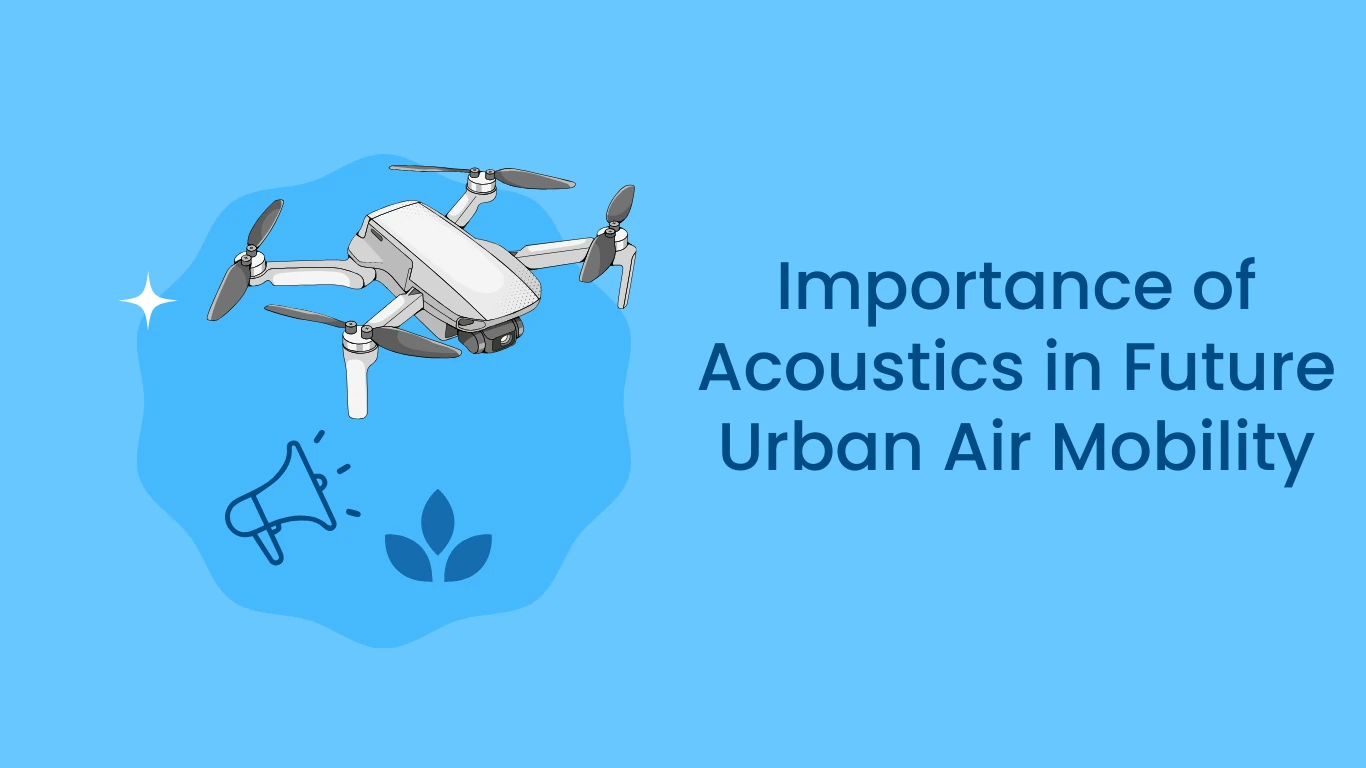
Psychoacoustics
The pressure waves generate vibrations on our ear’s air-drum, this signal travels via the auditory nerve to the brain, which is eventually perceived by our brain. Psychoacoustics is the study of how the human body receives sound and the effect of different characteristics of sound (such as pitch and loudness) on the auditory response. Since the human body in general and the ears in particular are not machines, the cognitive power of the brain manipulates the perception and human response to different aspects of sound signals.
The psychoacoustic parameters of a sound are pitch, loudness, sharpness, tonality, duration and roughness. What makes a sound ‘Good’ or ‘Bad’ is not a clear boundary but depends on personal experience and context.
Frequency Response of Human Ear
The sensitivity of the human ear is not the same on all frequencies; it responds to a particular frequency band (generally 20 Hz – 20 kHz) and is particularly sensitive between 2 kHz and 5 kHz. The response attenuates at higher frequencies, particularly impulse signals such as an impact.
How the Sound Pressure Level is Defined
The physical characteristics of sound level are defined as pressure variation (in Pa) across the mean ambient pressure. The energy content in sound is related to the amplitude of these pressure variations or sound waves by a square function. However, the perceived level of sound at a listener decreases with distance (linearly). Whereas “sound intensity” which is a measure of power, decreases with distance by a square function.
Extreme Intensity Levels
The intensity band that a human ear can perceive also has an upper and lower bound. The upper bound or “Threshold of Pain” is the maximum level that can cause physical damage to the ears and is around ±200 Pa. While the lower bound or “Threshold of Hearing” is the sensitivity of the human ear and is around ±20 µPa.
How the Sound Pressure Level (SPL) is Measured
The measure of sound is performed in units of sound pressure level (SPL) which is a decibel scale of measure (a logarithmic scale), meaning that SPL are defined in terms of a reference pressure level. The equation for SPL calculation from single and multiple sources is given below:

Where P0 is the reference pressure level and is normally set to the threshold of hearing or 20 µPa. Therefore, a 0dB on SPL scale is the lowest level of human hearing. The raw frequency spectrum obtained is processed by the sound meter to emulate the frequency response function of the human ear; this is called A-weighting (there are other functions available such as Z, C etc.)
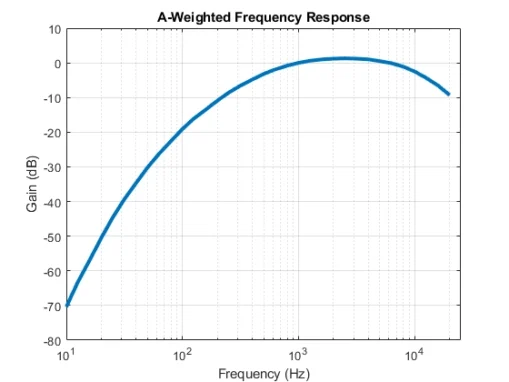
The figure below provides the SPL levels of some common sources. For example, a nearby jet engine will have an SPL level between 120 and 130 dB; if put into perspective, it is around 3 million times greater than the reference value!
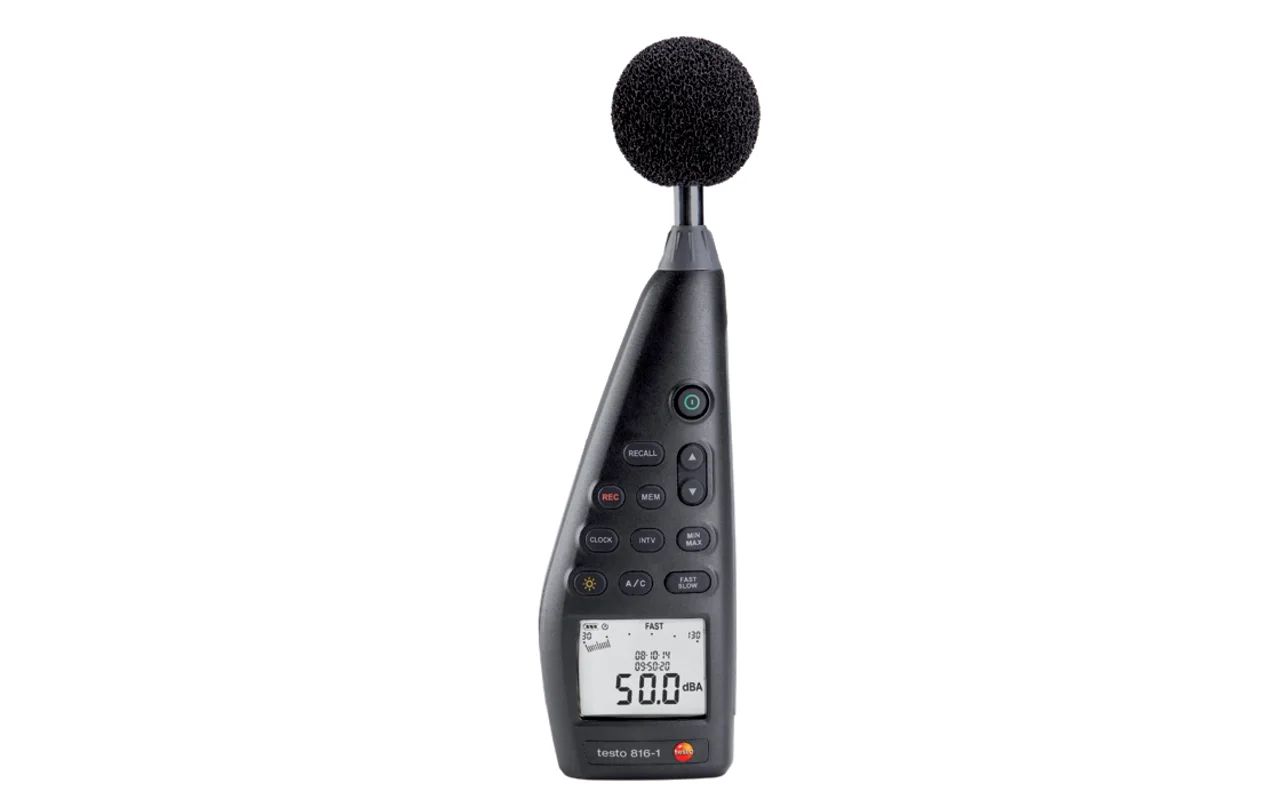
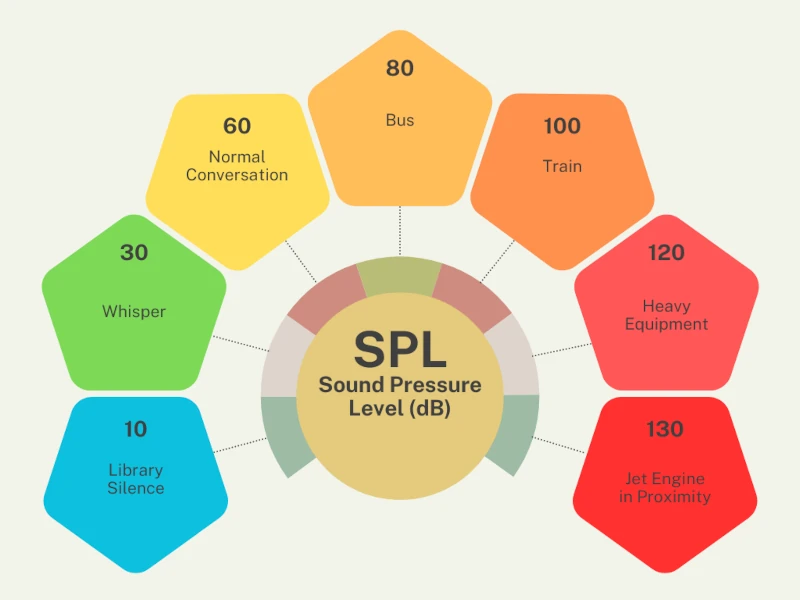
Importance of SPL in Urban Air Mobility (UAM)
Sound pressure level is a crucial parameter for flying taxis in a UAM environment:
- Noise Pollution: Noise pollution is one of the main concerns for UAM. With an increase in the number of flying taxis; levels can increase to an extent where the appropriate measures need to be taken.
- Social Acceptance: Excessive noise can disrupt communities and may adversely impact the public acceptance of UAM. Regulatory bodies establish noise emission limits for UAM vehicles to minimize noise pollution.
- Safety Considerations: Loud noises can also be disruptive for the operators and can potentially hinder in communication.
Noise Mitigation Options
- Electric Propulsion: Electric motors used in flying taxis are inherently quieter than traditional combustion engines used in helicopters. This is a significant advantage for reducing noise pollution in urban environments.
- Propeller Optimization: Propeller blade design can be optimized to have lower noise. A detailed discussion of this option is given below.
- Operational Procedures: Optimized flight paths and altitude restrictions can be implemented to minimize noise impact in populated areas.
Effect of Propulsion System
The aerodynamic noise generated by the propeller is dependent on the tip speed/mach number, which is further proportional to both propeller RPM and diameter. The tip speed can go up to high subsonic or near-sonic values and cause significant noise levels. Although a bigger diameter gives more static thrust and low speed efficiency (suitable for the UAM envelope), there is a trade-off with SPL. Another workaround is to install two or more propellers with a lower diameter to produce relatively less noise. The propeller thrust is proportional to the air mass flow being accelerated. Increasing the propeller RPM also increases the thrust; but at the cost of increased SPL.
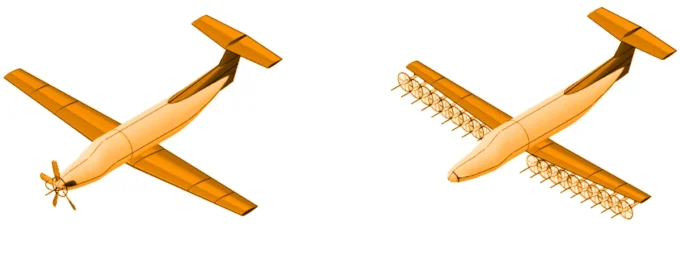
Conclusion
It seems essential to have minimal noise footprint of UAM flying vehicles. This will help in gaining public acceptance and complying with the noise emission standards. Electric and distributed propulsion do have an edge in this domain, as there are already ways to improve and potential research opportunities.

